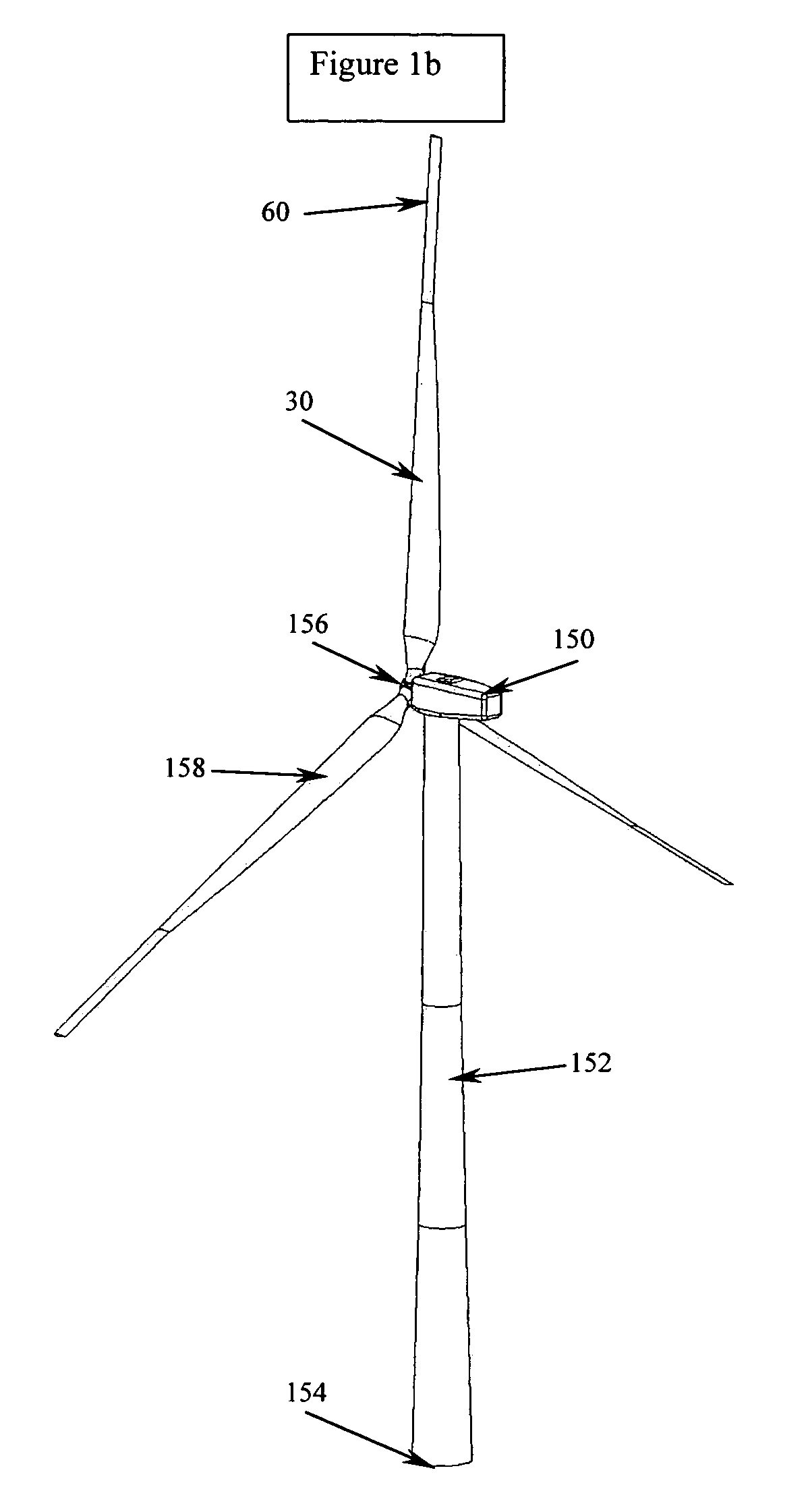Mechanism for extendable rotor blades for power generating wind and ocean current turbines and means for counter-balancing the extendable rotor blade
a technology of wind and ocean current turbines and rotor blades, which is applied in the direction of rotors, marine propulsion, vessel construction, etc., can solve the problems of aircraft fatigue failure, inability to address the requirements of wind or ocean current applications, and inability to address bielawa patents, etc., to achieve the effect of reducing the number of aircra
- Summary
- Abstract
- Description
- Claims
- Application Information
AI Technical Summary
Benefits of technology
Problems solved by technology
Method used
Image
Examples
Embodiment Construction
[0045]FIG. 1a illustrates an underwater power-generating device. The underwater power-generating device includes a pair of electric generators housed in fluid-tight nacelles, 100, 102, which are connected together by a hydrofoil structure. The hydrofoil structure consists of a central section 106 and a pair of wings outboard of the nacelles (“wing tips”) 108 and 110. The hydrofoil wing tips are canted upward to provide roll stability.
[0046]The central wing 106 contains one or more cylindrical ballast tanks that span the distance between nacelles. The ballast tanks are used to provide variable buoyancy and forward-aft weight shifting between ballast tanks and to serve as the structural members connecting the nacelles. The hydrofoil structure positions and supports the nacelles, 100, 102, on the upper surface of the wing 106 with each of the nacelles located at the ends of the central hydrofoil structure.
[0047]Each generator has a rotor 114 and 116 with variable pitch blades, 118 and ...
PUM
 Login to View More
Login to View More Abstract
Description
Claims
Application Information
 Login to View More
Login to View More - R&D
- Intellectual Property
- Life Sciences
- Materials
- Tech Scout
- Unparalleled Data Quality
- Higher Quality Content
- 60% Fewer Hallucinations
Browse by: Latest US Patents, China's latest patents, Technical Efficacy Thesaurus, Application Domain, Technology Topic, Popular Technical Reports.
© 2025 PatSnap. All rights reserved.Legal|Privacy policy|Modern Slavery Act Transparency Statement|Sitemap|About US| Contact US: help@patsnap.com



